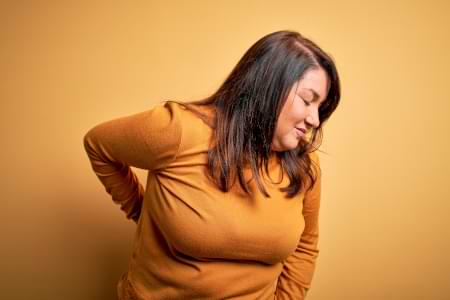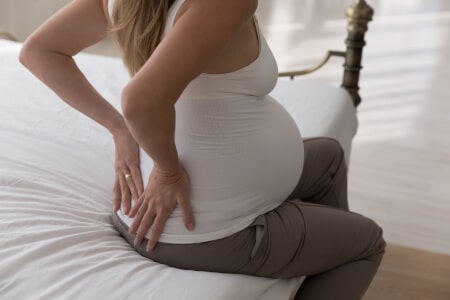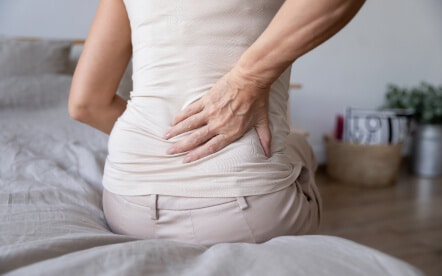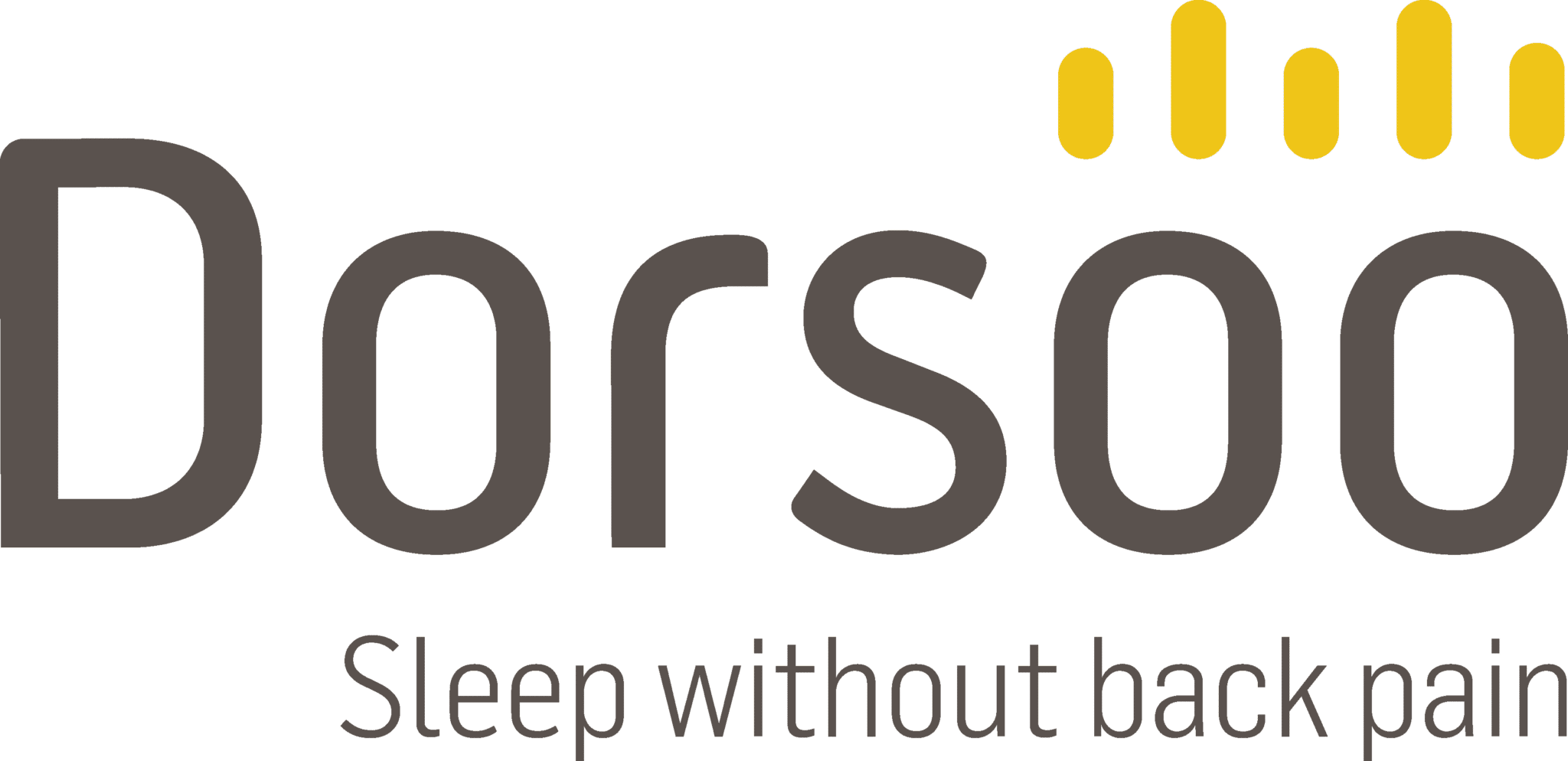Causes of lower back pain in women
According to the European statistics platform Statista, the incidence of lower back pain among women in Europe was approximately 4,791 per 100,000 in 2019. For the male half of the population, this was 3,686 per 100,000. Upon examining the historical data, it’s evident that the prevalence of lower back pain is on a steady rise, with a consistently higher incidence observed among women.
In our article on the symptoms, causes and treatment of lower back pain, we outline the general issues associated with lower back pain. Of course, many of the common symptoms and causes of lower back pain also apply to women. Nevertheless, there are a number of specific gender-related aspects that certainly deserve attention. Moreover, a 2022 study indicated that healthcare professionals tend to underestimate or discredit the severity of back problems in women. All the more reason to compile all articles about the causes of back pain in women into a comprehensive overview in this umbrella blog.
The impact of the female anatomy on the occurrence of lower back pain.
A relatively longer abdominal and lumbar area
We cannot ignore the fact that the female anatomy is designed for childbearing. The female torso has a smaller chest area, but a larger abdominal area and a longer lumbar region compared with men. The lengthier abdominal and lumbar areas in women result in greater spinal stress, particularly during pregnancy.
A flexible pelvic zone
Then there is the structure of the female pelvis, which is positioned lower and has a broader and wider structure compared to the more funnel-shaped male pelvis. The strength of the connections between the pelvic bones and vertebrae in women never quite matches that in men. That region is more flexible and yielding, because it is prepared for the arrival of a baby. More so than men, women should prioritise strengthening their ‘less robust’ skeletal support structure, particularly at the pelvic level, by exercising their abdominal and back muscles, in particular through targeted core stability exercises.
Breasts
Another defining characteristic of the female body is the presence of breasts, intended for breastfeeding children – an additional reproductive feature. It is the shoulders, neck and back that bear the weight of a woman’s bosom. The larger and heavier the breasts, the more weight has to be carried and the higher the likelihood of experiencing pain and tension in those areas.

The female hormone balance as a cause of lower back pain in women
Menstruation
More than 10% of women experience severe lower back pain during the menstrual period. The culprits are the so-called prostaglandins. During menstruation, the body releases large amounts of hormones that relax, among other things, the support bands, or ligaments, around the hips and vertebrae. As a result, the lower back has a lot to endure.
Menopause
Menstruation is a significant factor in the onset of back pain in women undergoing menopause. The final menstrual cycles preceding menopause can often be more intense than usual. Considering what we know about the impact of menstruation, as outlined above, it’s clear that lower back pain during the onset of menopause can be perceived as more intense than ever before.
A secondary effect of menopause is that over time, joints, tendons and muscles become less flexible and osteoporosis can even occur. This occurs as a result of diminished oestrogen levels, which is the main contributor of collagen, the protein that keeps our tendons and muscles flexible. The effect of collagen is therefore nipped in the bud.
The influence of pregnancy on lower back pain
We have already pointed out that the female body exhibits slightly less resilience in key areas, a characteristic aimed at easing childbirth, and this can result in a higher propensity for lower back pain. Of course, there is also the burden of the pregnancy itself. A woman’s posture and the workings of the pelvis experience a complete change to support pregnancy and ease the delivery itself. As a result, a woman’s back and pelvis endure significant strain, with an increased risk of pelvic instability. The pelvic floor muscles also sag, potentially leading to incontinence.
In the blog back pain during pregnancy, you can read more about the exact forms of strain experienced during pregnancy and about the mechanism behind pelvic instability. But above all, read the eight tips aimed at making your pregnancy more comfortable.

The influence of women’s clothing on lower back pain
A wrong bra
We have already mentioned the burden of (overly large) breasts in this blog. The right bra can bring considerable comfort, but unfortunately many women are wearing ill-fitting bras. In an attempt to adjust for an ill-fitting cup size, the bra straps are often set too tight or too loose. In the absence of proper breast support, the back and shoulder muscles are forced to compensate, which can cause muscle pain in the neck, shoulders and lower back, or even lead to muscle tension headaches. So it certainly pays to have your breasts measured each time you buy a bra, because there can be changes in a woman’s life path – and body – for all kinds of reasons.
High heels
High heels are often blamed for causing back problems in women, yet the limited scientific research available does not substantiate this claim. A 2017 study proved that high heels do not excessively affect the natural curvature of the back. However, the researchers suspect an indirect effect: after all, high heels can indeed cause pain in the ankles, knees and hips, and these symptoms could eventually lead to pain in the lower back.


